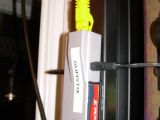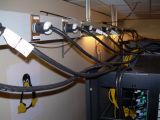Microsoft is regarded as the traditional anti-Linux poster child. The Redmond company is in this context at the opposite end of the spectrum in comparison with the open source community. And while this dichotomy is valid for a range of open source and free software products, as well as Microsoft's proprietary solutions, nowhere it is more consistent than in the face-off between Windows and Linux, both on the server and the client side. But at the same time, Microsoft is slowly embracing open source, while answering its customers' need to run heterogeneous environments with mixed source solutions by building an interoperability bridge between the Windows and Linux platforms.
For this, Microsoft has reserved a fief of its Redmond campus for open source. All the images included at the bottom of this article have been taken inside the Microsoft OSS Lab, courtesy of Port25. "To some folks outside of Microsoft, the Open-Source Software Lab has been a sort of mysterious place. A place where we study Linux and open-source software, cursing our enemies while brewing our malevolent plans to combat those nasty FOSS developers. Oh, and we also have a death ray on the roof of building 17. It's Linux-powered, of course, just to add a little irony," stated Stephen Zarkos, Microsoft OSS Lab Manager.
The actual Linux/OSS Lab at Microsoft is a tad less imaginative than Zarkos' description. Essentially, the lab is a collection of servers designed to run open source solutions, with the Linux platform at the forefront. Microsoft's work is focused since the 2006 Linux and Windows interoperability agreement, on making the two operating systems play well with each other. Of course, this does not mean that Microsoft is working to make Windows open source. Just in case you were starting to hold your breath waiting for just such a solution.
"Currently, our lab houses about seven racks of servers. Unlike some of the build-labs on campus, the OSS Lab contains an eclectic variety of hardware. From older Pentium III Compaq blade servers, 8-way Xeon, Itanium and Opteron systems, to the latest POWER6. Most of the systems run some distribution of Linux, but we also have several BSD, AIX and Sun systems as well. And, naturally, we also have a good number of Windows systems (we are an interop lab, after all)," Zarkos added.

 14 DAY TRIAL //
14 DAY TRIAL // 





